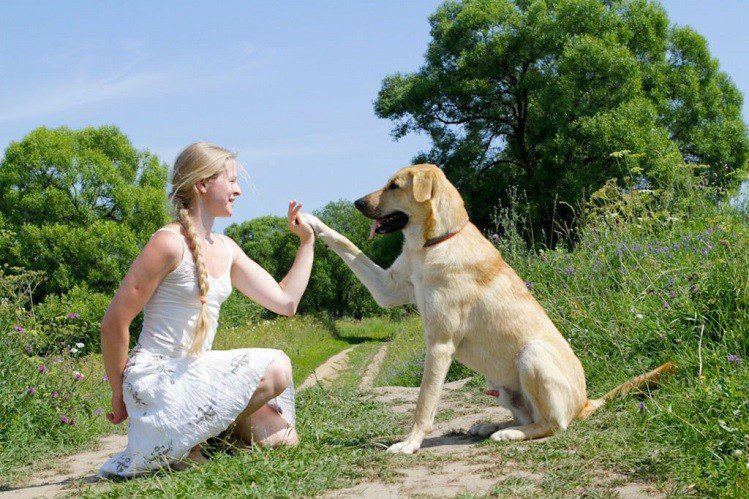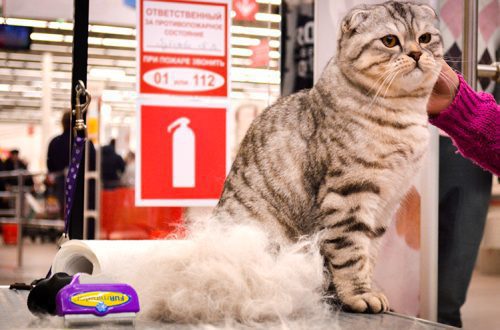
Why pet hobbies are important? Maria Tselenko says
Interview with behavioral medicine specialist, veterinarian Maria Tselenko.
On October 28, Maria held a webinar “Joint hobbies: what to do with a dog or a cat at home in autumn?”. We hope you didn’t miss it: it was very interesting!
We decided to continue the conversation with Maria and find out why the hobby with a pet is really important and who can be taught what tricks.
Just be careful: after reading this, you will know how to teach your dog to blow bubbles and you will definitely want to try it! Ready?
- Maria, please tell us why a hobby with a dog or a cat is necessary and important?
– In the process of joint activities, we devote time to the pet, learn to understand each other, and together experience the joy of joint victories. This improves contact and strengthens friendship! For caudates, such activities bring variety to daily life and develop their mental abilities.

- Why are games called the main cure for stress?
– Probably because the game is connected with joy. But it also depends on the game. If the game is too excitable (like chasing a ball, for example), it can be stressful in itself.
- One of the most popular dog hobbies is teaching tricks. Can all dogs do tricks? Does this skill depend on the breed?
Yes, all dogs can do tricks. But not every trick can be performed by every dog. Tricks may be associated with certain movements and some dogs will not be able to perform them due to the nature of the structure. But there are a great many different tricks.
You can always find something suitable for a particular pet.
- Tell us about the most amazing tricks you’ve seen in your practice?
– Complex issue! When you know how any tricks are performed, they no longer seem amazing. For example, there is a trick where the dog blows bubbles in a bowl of water while exhaling air. It looks impressive, but from the point of view of training, everything is quite simple. Most dogs can be taught this in half an hour.
- Wow, a dog blowing bubbles sounds fantastic! Especially if you can train in just half an hour. Can you please tell us what the learning process looks like?
– To teach this trick, the dog must know the reward marker (for example, a clicker). To begin with, we teach the dog to touch the bottom of an empty bowl with his nose. Then we learn to hold the nose at the bottom of the bowl for up to 5 seconds. Then add some water and gradually increase its level. At the same time, we catch the moment when the dog exhales. Everything is simple! But, once again, in order to teach this trick, the dog needs to know the reward marker.
- More or less clear with dogs. But cats are very distinctive pets. How can you teach them tricks? What is the main secret?
– The main thing to remember is that we do this for fun: both our own and the cat’s. It doesn’t matter how much you learn, but it is important that the cat enjoys the process. My cats, for example, purr in class. For them, it’s a fun game.
- What to do if you really want to learn tricks with a pet, but he stubbornly refuses to perform them?
– Call a specialist for help and figure out what the snag is. Maybe the animal is not psychologically ready for close interaction and we need to start with establishing contact. Or there are problems with motivation – and then you should work on it first. Perhaps the owner has overstated requirements and he sets too difficult a task for the animal. Or makes wrong movements, inconsistent. Or perhaps this is just the situation when a particular trick does not suit a particular animal physically.
- Do you have any pets?
Yes, I have two dogs and two cats.
- What are their favorite games?
— I think my dogs love any activity. It doesn’t matter if I offer them toys with food, training or fitness. Cats play with toys and love to play tricks.
- What tricks can your cats and dogs do?
— Dogs do a lot of tricks. The most unusual of them is, perhaps, blowing bubbles in water and when one dog takes a toy, passes it to another, who puts them in a box.
Cats know how to snake between their legs, know the command “sit” and “sit on their hind legs”, jump over an obstacle. One cat knows the commands “sit/down/stand”, “tumble” and “Spanish step”. The “Spanish step” is when he walks with his front paws high, like a circus horse. The second one knows how to bow, jumps on his knees and learns to make a “house”: he stands between my legs, and puts his front paws on my feet.

- Do you have any hobbies with pets? Besides games and tricks?
– In addition to learning tricks, we do nosework with dogs. In this direction, dogs are taught to look for and designate certain smells. For example, my dogs show where cinnamon, cloves or orange peel are hidden.
- And the last question: is there a universal hobby that will suit any family with a cat and that you can start doing right now?
– I think that every cat can be taught to sit on its hind legs or climb on an inverted basin.
- Thank you very much! We wish you good luck and a lot of joy in your future studies!





